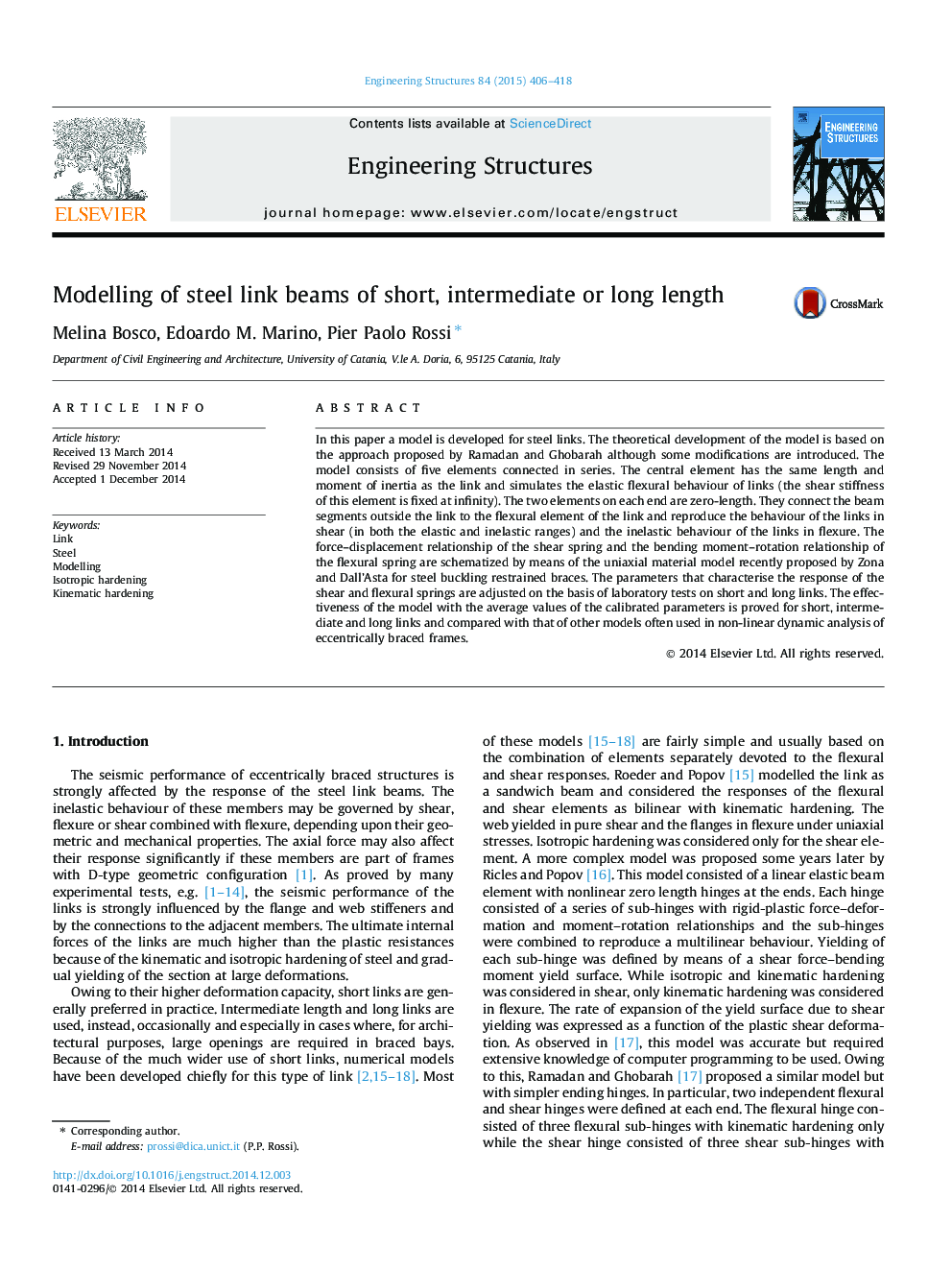| Article ID | Journal | Published Year | Pages | File Type |
|---|---|---|---|---|
| 6740617 | Engineering Structures | 2015 | 13 Pages |
Abstract
In this paper a model is developed for steel links. The theoretical development of the model is based on the approach proposed by Ramadan and Ghobarah although some modifications are introduced. The model consists of five elements connected in series. The central element has the same length and moment of inertia as the link and simulates the elastic flexural behaviour of links (the shear stiffness of this element is fixed at infinity). The two elements on each end are zero-length. They connect the beam segments outside the link to the flexural element of the link and reproduce the behaviour of the links in shear (in both the elastic and inelastic ranges) and the inelastic behaviour of the links in flexure. The force-displacement relationship of the shear spring and the bending moment-rotation relationship of the flexural spring are schematized by means of the uniaxial material model recently proposed by Zona and Dall'Asta for steel buckling restrained braces. The parameters that characterise the response of the shear and flexural springs are adjusted on the basis of laboratory tests on short and long links. The effectiveness of the model with the average values of the calibrated parameters is proved for short, intermediate and long links and compared with that of other models often used in non-linear dynamic analysis of eccentrically braced frames.
Related Topics
Physical Sciences and Engineering
Earth and Planetary Sciences
Geotechnical Engineering and Engineering Geology
Authors
Melina Bosco, Edoardo M. Marino, Pier Paolo Rossi,
